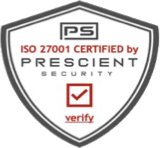The Canada Business Corporations Act (CBCA) was first introduced in 1975 to replace the previous legislation entitled the Canada Corporations Act. The primary purpose of the CBCA was to:
-
Revise and reform the law applicable to business corporations incorporated to carry on business throughout Canada
-
Provide uniformity to business law across Canada
-
Allow federal corporations incorporated under the CCA to continue under the CBCA
Some of the ways the CBCA reformed how business is conducted in Canada had to do with the transfer and issuance of shares, as well as updated shareholder rights. The new laws are important for businesses to understand should they plan to incorporate in the near future.
How the CBCA specifies the transfer and issuance of shares
Under the CBCA mandate, all corporations that issue shares to shareholders must maintain a securities register to remain in compliance with federal law. A securities register, also known as a shareholder register, lists all the issuances of a corporation’s shares to its registered shareholders. The register contains personal information about the shareholders; additionally, it lists the number of shares held by each shareholder, and the date that shares were issued or transferred to the various shareholders.
The corporation is the issuer of shares. In most jurisdictions across Canada, the issuance of shares verifies shareholder rights and interest in the corporation’s rights or property. Corporations headquartered in Quebec follow a similar mandate by issuing shares that confer rights to the corporation’s property.
Shareholder rights under CBCA provisions
The CBCA also outlines specific shareholder rights that must be upheld by all corporations within Canada. One of the most important provisions within the CBCA is the protection of minority shareholders’ rights. Regardless of whether shareholders hold majority or minority ownership of the corporation, the CBCA states that all shareholder rights must be protected and respected. There are significant and far-reaching financial penalties if those rights are violated.
Additionally, the CBCA states that:
-
There is no mandatory requirement for a fixed number of shares
-
The idea of “par value” shares is an abolished concept and a prohibited practice
-
Recognition that shares can be classified under different share classes
-
At least one share class in every corporation must always have unrestricted voting rights
-
Shares may not be issued on partly-paid or a subscription basis
There are also laws for “bearers of shares.” Under the CCA, bearers of shares did not have the same rights as registered shareholders. The CBCA states that bearers of shares do have the same rights; however, the “bearer share” is not recognized by name. The bearer share will appear in the shareholder register simply as “bearer.”
Corporations also have authorization to issue fractional shares, and they have the right to issue maximum flexibility, particularly in the case of amalgamations, share exchanges and share splits. Board directors are entitled to fix record dates to determine the shareholders’ rights to receive dividends, receive notices of meetings, or participate in liquidation distributions.
How to protect shareholder rights with entity management technology
The CBCA demands that all corporations maintain up to date shareholder registers to comply with federal laws. Traditionally, corporations have kept records of all shareholders, issued shares, and share classes in a physically binded ledger.
However, think about how this approach looks for a company in the 2020s. Rather than an innovative and accessible solution to document shareholder information, a physical ledger is a handwritten document. It requires tedious amounts of time and energy spent to update new shareholder records, or to record transfers of shares from one shareholder to another.
Innovative corporations use entity management software, like MinuteBox, to create, amend, and verify information in a digital shareholder ledger. Instead of writing notes into a binder, corporate counsel can use entity management platforms to drag and drop new data into the ledger in just a matter of seconds. This is a far more time efficient way to keep track of all important shareholder information.
The best part about this approach is that platforms like MinuteBox are cloud-based solutions. This means that all shareholders can access the ledger from the convenience of their own homes or wherever they may be in the world that can connect to the internet. The system is protected with biometric and hardware key authentication parameters. This ensures only those with shareholder rights have access to the ledger, which is very important to protect shareholder privacy from the prying eyes of the public.


